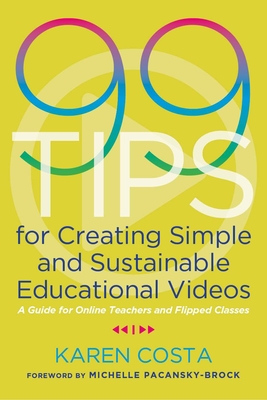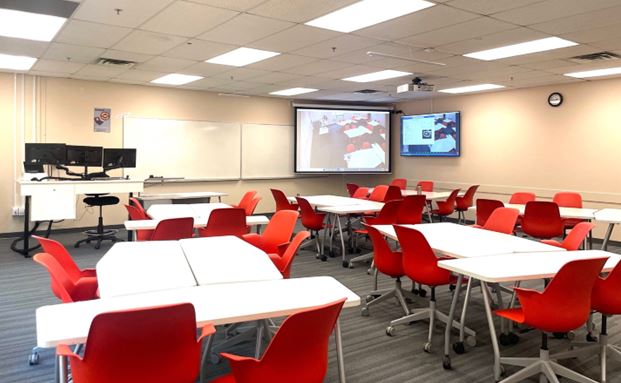What is Ed Media? Why should I care?
Written by: Robin Leung
The question of the day is this, what is “educational media” or “ed media”? I don’t blame you for not knowing because some days, I’m not so certain myself. Yet, I am supposedly the subject matter expert. Ironic? Not really.
Education and media can be broadly defined. If you ask one to define education and media, I am almost sure that you wouldn’t have a linear response. Your responses may vary depend on who you ask, how much experience the person has, or the context it was given. Education can be broadly viewed as cultivation of learning. Whereas, media is the driving vehicle to deliver learning.
According to a paper written in the 1970s, Carnoy and Levin (1975) stated that educational media included educational radio and television, computer-assisted instruction, and video-tape instructional systems. However, some of these technologies are close to extinction. Where are the screen technologies, video streams, and social media? These are the technologies that your 21st-century students of today grew up with, and if we, as instructors and facilitators, don’t meet where our learners are at then we will have a disconnect with our learners. A recent UNESCO report argued (as cited in Silber-Varod, Eshet-Alkalai, and Geri, 2019), “growing gaps in the knowledge and competencies of different populations, countries and economies has resulted in an increasing divide in our technology-driven society. (p. 3100)”
So, what is educational media? I like to define ‘ed media’ as the process of receiving or giving instruction using visuals or audio. Visuals, to me, are anything that isn’t entirely text. In that case, many things could be deemed visuals. A graphical icon is visual, a video is visual, a meme is visual, and I would even say shapes are visuals as well. Audio is a compliment to visuals, just like how it is incredibly hard to watch television without sound. Educational media brings what was 2D to a 3D world. It provides another dimension to providing or receiving instructions through visual and sound. Omodara (2014) cited that in education, media are the symbol systems teachers and learners utilize in representing knowledge.
Now that you know what ed media is, why should you care? I think there are three good reasons why you should care. First, media is always changing. We learn from our simple example above that in two decades, video-tape as an educational media became obsolete. That’s only one example. Think about the many other types of educational media that haven’t been mentioned. A few of these apply right here at KPU, like overhead projection, video on discs, and audio tapes to name a few. Seifert (2017) stated that integrating technological change in this digital era is an integral part of our necessary knowledge and skills.
Second, educational environments are changing. Classrooms are no longer the same as they once were. As cited in Bates (2015), “online learning enrollments have been increasing by 10-20 percent per annum for the last 15 years or so in North America, compared with an increase in campus-based enrolments of around 2-3 percent per annum.” This change in classroom settings should trigger us (as instructors) to re-evaluate our learning activities to engage students. Perhaps standing in front of a podium in a lecture hall or in front of the classroom is less effective in today’s classrooms. As more instructors teach online, the use of educational media to support students’ learning is inevitable. For example, the use of video introductions could potentially replace the face-to-face introduction in class before students coming to class. It allows for not only more class time, but you can build a relationship with your students before they step into the classroom. Our 21st century learners grew up with current technology and may be native to this. Yet, most faculty and educators were not born into this world of new media and therefore, must adapt their teaching methods to this present age.
Third and finally, educational media promotes inclusivity and principles of universal design. (for more about universal design, consider reading the blog post “Access” (https://dev.wordpress.kpu.ca/tlcommons/access/) by my excellent colleague Seanna Takacs.) The overall goal of UDL is to be inclusive and barrier-free in your course design, to meet the needs of more students. As Barkley (2010) cited, today’s students come from a variety of ethnic and racial backgrounds, represented in that is a diversity of ages, including visual and auditory . By including educational media as part of your toolkit, you become more approachable in your teaching. For example, using videos to explain a complicated idea allows for your learners to scaffold and watch it over and over again until they have an understanding of the concept or enabling captions in video-based learning so that those who have hearing challenges will be able to learn equally.
The list of reasons goes on for adopting educational media if I have not convinced you already. I hope this gives you a peek into my world and gives you some thoughts on why you should adopt educational media in your teaching and learning practice. Adapting educational media could enhance your teaching and learning experience for you and your students in unexpected and exciting ways. If you are using educational media in your teaching practice, I’d love for you to connect, so that we could highlight your work here at the Commons.
Barkley, E. (2010). Student engagement techniques: a handbook for college faculty.
Bates, A. W. (Tony). (2015). 8.2 Students. In Teaching in a Digital Age. Tony Bates Associates Ltd. https://opentextbc.ca/teachinginadigitalage/chapter/9-2-the-sections-model/
Daumiller, M., Stupnisky, R., & Janke, S. (2020). Motivation of higher education faculty: Theoretical approaches, empirical evidence, and future directions. International Journal of Educational Research, 99, 101502. https://doi.org/10.1016/j.ijer.2019.101502
Dewey, J. (1916), Democracy and Education. An introduction to the philosophy of education (1966 edn.). New York: Free Press.
Seifert, T. (2017). Training the Teachers of Tomorrow in an Era of Rapid Technological Advancement. I-Manager’s Journal of Educational Technology; Nagercoil, 14(1), 35–46.
Robin is the Educational Media Strategist in the Teaching & Learning Commons at KPU. He oversees the educational media platform (Kaltura) and the blogging/portfolios platform (WordPress). He provides practical strategies to incorporate media-based assessments, engagement and enhance traditional methods of teaching and learning by introducing faculty to digital innovations.



